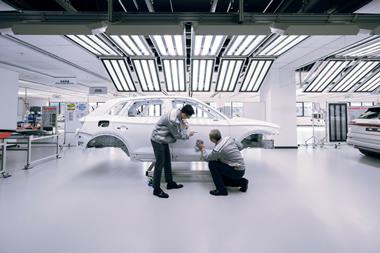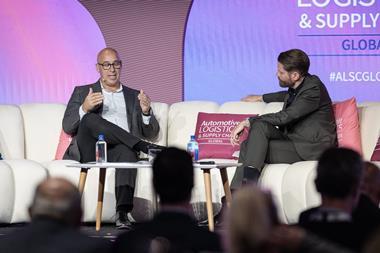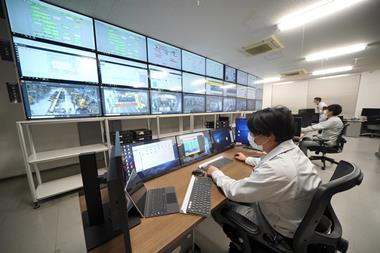Extended delivery hours offer the benefits of less congestion and reduced dwell time, but they depend on dealer willingness, local laws and crime rates. Surprisingly, there has been a low uptake in Britain compared to parts of the US
 Back in 2006, a trial began within the British operations of Honda Motor Europe to see if nighttime vehicle deliveries to Honda dealers might be a practical proposition.
Back in 2006, a trial began within the British operations of Honda Motor Europe to see if nighttime vehicle deliveries to Honda dealers might be a practical proposition.
Dealers, it was known, were largely reluctant to contemplate such a move, so the trial deliberately involved two that were part of Honda’s national dealer council. As a result, relates Simon Stacy, head of car logistics at Honda Motor Europe, the dealerships in question were those with whom “we had strong relationships and where both sides could speak freely and frankly.”
Moreover, both dealers were located within Britain’s M25 corridor – the motorway that circles London, where daytime deliveries have to contend with high levels of traffic, limited parking and unloading space, and sporadic delays caused by traffic accidents and gridlocks. Even better, in the case of one of the dealers, deliveries would be made to an offsite compound, thereby easing the challenge of delivering vehicles to unmanned premises.
Despite such propitious beginnings, the trial was abandoned after six months and has not been resumed since. Although it all looked good on paper, the supposed advantages of extended-hours deliveries were largely cancelled out by other difficulties and disadvantages.
Load construction, for instance, was a problem. Honda doesn’t operate with a business model of full loads routinely going to a single dealer, explains Stacy. Also, the multi-brand vehicle transport companies that were used for deliveries consequently struggled with scheduling day and night deliveries on the same load.
Extra staffing costs were also incurred when dealers’ own staff or security guards attended deliveries. These costs then had to be balanced against the extra risk of dealers bearing the cost of any vehicle damage when deliveries weren’t attended.
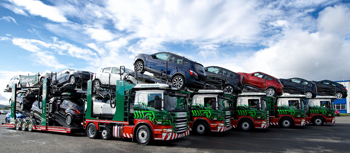
Difficulties even arose with the transporter companies participating in the trial, as their drivers wanted a premium rate for making extended-hours deliveries.
“We didn’t really agree with the logic of this, but it was yet another issue that we had to contend with and was actually a significant enough cost to negate the benefit that we thought we were achieving,” sums up Stacy. “The pluses and minuses of nighttime deliveries more or less balanced each other out, so the impetus for it died.”
Not in this green and crowded land
What’s perhaps most surprising about the trial’s failure is it took place in the tiny and crowded UK, where the logic of off-peak delivery might make the most sense. According to figures published by Britain’s Office of National Statistics, the population density in 2010 for England alone – excluding the sparsely-populated moors, mountains and glens of Scotland and Wales – is 413 people per square kilometre, with the southeast and M25 corridor exceeding the national average.
"With noise complaints and driver premiums, we found] the pluses and minuses of nighttime deliveries more or less balanced each other out, so the impetus for it died" - Simon Stacy, Honda Motor Europe
s such, the UK is one of the more densely populated countries in the world, excluding crowded city-states such as Monaco, Singapore, Hong Kong, and Gibraltar. The average number of people per kilometre of land is far more than the 34 estimated by the World Bank in 2011 within the US – or the nine people spread over the same distance in Canada.
So, through the meandering, narrow streets of British cities and spiralling roundabouts – no neat American-style ‘grid plan’ road layouts here – British car transporters must somehow weave their way.
Despite the apparent benefits of doing this in reduced traffic, Honda’s negative experience with the notion of afterhours deliveries is not unique in the UK. Paul Bromley, managing director of vehicle transporter company Paragon Vehicle Services, was involved in a similar trial when he was heading the vehicle logistics operations of another carmaker in the country. Ten years ago, a dealership located at Salford Quays, close to Manchester, had an offsite compound and was willing to help test the concept of nighttime deliveries, but the trial quickly fizzled out, explains Bromley.
Once it became known that the company was making deliveries at 2am, the transporter drivers became aware that they were under observation by people assumed to be criminals. Security guards had to be hired to meet the deliveries and ensure that they went off smoothly, adding cost to the process. Nor did the presence of guards totally assuage drivers’ concerns.
“In the end, we gave up,” recalls Bromley. “Of the 240 or so dealers in the network, fewer than a dozen were remotely interested in afterhours deliveries – and they were ones with offsite compounds. The others just didn’t want to know.”
The dealer network of the manufacturer in question is no different from the rest of Britain’s car dealerships, he reckons. Paragon, with its 110-strong vehicle transporter fleet, sees no interest from dealers in receiving out-of-hours deliveries. “There’s just no appetite for it,” he notes. “Dealers just say ‘there’s no incentive for us to do it – it just adds cost.’”
Still in demand
Yet, as the finished vehicle supply chain continues to seek out opportunities to improve efficiencies and reduce costs, the topic of extended-hours deliveries to dealers just won’t go away. Logistics executives at carmakers ranging from Daimler in Europe and Honda in the US have pushed strongly for LSPs, compounds and dealers to extend their operating hours, citing many benefits: greater vehicle utilisation, for instance; less driver and truck time wasted in traffic congestion; more predictable delivery times; better fuel efficiency; freeing-up expensive transport capacity without the need to buy extra trucks; vehicle inventory moving through the finished vehicle supply chain more quickly without stopping at night or at weekends. And so on, and so on.
Moreover, extended-hours deliveries can credibly be claimed to help meet manufacturers’ branding agendas. From a dealer’s perspective, staff can be totally focused on serving customers and selling and servicing vehicles rather than unloading and inspecting those arriving on trucks. Dealers’ lots and forecourts, where selling space and image is at a premium, are not obstructed by vehicle transporters, usually bearing a transporter company’s brand, or carrying multi-brand vehicle loads. Not to mention the chance to improve customer satisfaction, with vehicles arriving at dealers’ premises as quickly as possible, without being stalled waiting for sites to open up after the weekend, for example.
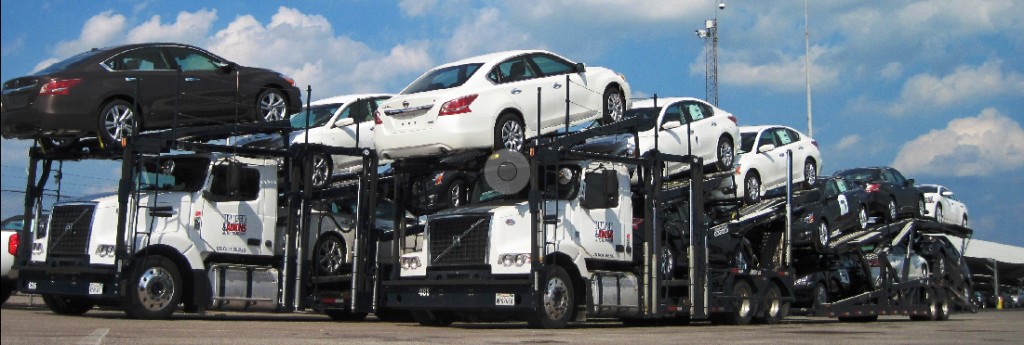
The truckers that never sleep
Despite these benefits, afterhours deliveries remain elusive for finished vehicle logistics executives in the UK, but that is not necessarily the case several thousand miles to the west, where in the US extended-hours deliveries have become an accepted fact for some carmakers and regions.
At Toyota Motor Sales USA, for instance, nighttime deliveries have been going on for around 20 years, with some 65% of Toyota’s nationwide dealers now receiving nocturnal deliveries when their premises are closed for business.
The company began with trials of night deliveries in Los Angeles, close to the carmaker’s national sales headquarters in Torrance, and discovered that they proved to be beneficial in avoiding traffic congestion, explains John Daly, national highway transportation logistics manager at Toyota Logistics Services.
Consequently, he says, these days Toyota conducts routine night deliveries in most major metropolitan areas, including New York, Los Angeles and San Francisco. From Toyota’s point of view, he explains, congestion is avoided and vehicle flow optimised, while from the dealers’ point of view, there is a benefit to being able to start the day processing vehicles that are available due to overnight deliveries.
“We started night deliveries to avoid traffic delays, minimise congestion at dealerships, keep up the flow of vehicles moving through the pipeline and maximise deliveries,” he notes, pointing to work underway to extend the use of out-of-hours delivery slots even further. “We are continually trying to expand delivery hours to keep pace with the flow of vehicles through the supply chain pipeline.”
A question of perspective
That said, not every carmaker is able to report comparable success. Texas-based vehicle haulier US AutoLogistics, for instance, which handles deliveries for Gulf States Toyota – the carmaker’s Texas distributor – as well as Honda, Subaru, Nissan, Mercedes-Benz and Mazda, sees its customers approach the issue in very different ways.
“We can perform extended-hours deliveries for all the manufacturers we work for, but there are huge disparities between them – in part due to their respective ability to convince dealers to accept these deliveries and allow third parties onto their property unattended,” observes Richard Binkley, president of US AutoLogistics. “Manufacturers push from the top and say, ‘we’d like you to do this’, but the dealerships are independent franchises and don’t always see an incentive in moving to extended-hours deliveries.”
Dealers worry about security and damage, but many also vary in their ability to interpret and exploit the financial and competitive value of extended-hours deliveries.

That said, where out-of-hours deliveries do take place, the system works well, stresses Binkley. “We’re putting cars in a secure area, locking them and leaving them, and putting the keys in a designated location,” he sums up.
Another vehicle haulier, Hansen & Adkins Auto Transport, which has operations dotting the country and especially on the west coast and southeast, has also had mixed success with rolling out more afterhours deliveries. Vice-president of operations. Barry Williams reports that extended-hours deliveries for the company are currently running at around 20-25% of all deliveries, against an informal target of around 30%, but those averages hide significant variations.
“We get levels of 40-50% extended-hours deliveries in some areas, such as Miami and the Los Angeles basin, but as little as 10% in others, especially where crime can be an issue, such as National City [close to San Diego] and some parts of San Diego,” he points out. However, generalisation is difficult, he emphasises, and even within the same broad urban conurbation, there are wide differences.
“In some parts of the San Francisco Bay area, there are no extended-hours operations at all, as there’s a requirement for dealerships’ unionised employees to be present when vehicles are unloaded and these employees only work during the day,” he explains. “In other parts of the Bay area, it’s pretty much nighttime deliveries only, as traffic restrictions rule out daytime drops.”
A dealer’s prerogative
Such disparities are evident elsewhere as well. While Toyota has been able to run late deliveries in New York, other providers points to more resistance in the northeast region. In many cases, it is up to individual dealers.
A similar story emerges at industry major Jack Cooper Logistics, where chief operating officer Riki Howard again paints a picture of varying dealership willingness to engage in extended-hours deliveries.
“Across the industry, there’s no consistent view of extended-hours deliveries: some manufacturers are very good at encouraging dealers to accept them, others are less proactive,” he points out. “From our point of view, we’ve got an expensive asset that we’d like to be able to work longer and harder, but can’t because dealers won’t accept deliveries. It would be better for the industry if manufacturers did more to mandate extended-hours deliveries.”
That said, he notes that Jack Cooper does make the most of the opportunities open to it. Vehicles routinely pick up from railheads and plants at weekends, so as to be able to hit delivery windows early on Monday morning. At local levels, strong personal relationships between individual dealerships and drivers, and between dealerships and terminal managers and their dispatchers, create opportunities for extended-hours deliveries where possible, if even on an ad-hoc basis.
“We’ll say, ‘we can deliver on a Saturday if you can take it’, or ‘our driver is running late, can you stay open a little longer?’” explains Howard. “It’s all about personal relationships, local arrangements and mutual goodwill.”
At Hansen & Adkins, Williams echoes the importance of making individual approaches to dealers, rather than relying on a manufacturer-led dialogue to, literally, open doors.
 "From our point of view, we’ve got an expensive asset that we’d like to be able to work longer and harder, but can’t because dealers won’t accept deliveries"
"From our point of view, we’ve got an expensive asset that we’d like to be able to work longer and harder, but can’t because dealers won’t accept deliveries"- Riki Howard, Jack Cooper Logistics
We stress the benefits of extended hours to the dealer,” he explains. “There’s a 12-point list that we use when having the conversation and each bullet point is something that’s good for the dealer, but the option of extended-hours deliveries isn’t open to every dealer. You can’t put dealers in a high-crime area on nighttime deliveries, for instance, or dealers with a high damage claim rate.”
Also important for the smooth operation of extended-hours deliveries – especially at night – is a detailed understanding of dealer requirements, he adds. “Some have a guard service at night, some have other staff present, or none at all, or we have to open up ourselves, using chain locks for which we have the keys,” says Williams. “In each case, we have specific instructions about exactly where to park the vehicles and where to leave the keys. We’re very aware that if we don’t follow these instructions, the whole arrangement could
break down.”
So does the US experience with extended hours offer lessons for its adoption in other countries, including the UK, where dealers haven’t gone for it, or the US northeast, another densely populated area in which there has been resistance to the idea?
The answer is yes, suggests US AutoLogistics’ Richard Binkley. “Go for what you can get,” he advises. “Any extension at all to Monday-to-Friday, 8am-5pm, is a move in the right direction and serves to extend the window of opportunity in which you can deliver vehicles.
“Start with Saturday, or even Saturday morning,” he suggests. “Or explore Monday-to-Friday, 6am-6pm. Twenty-four/seven would be good, but in many cases, it is not absolutely necessary.”

Weekend and holiday restrictions across Europe can be serious interruptions to any co-ordinated attempt to extend delivery hours across borders.
The European Union famously aspires to be a single, common market, but in the case of vehicle deliveries to car dealerships, that aspiration looks to need a little more work. Nevermind, for a moment, the fraught legislative battle to harmonise allowable loaded lengths for car hauliers across the EU. Varying restrictions on heavy goods traffic is enough to make extended-hours deliveries a difficult policy to apply broadly. In France and Italy, for instance, there is a general ban on the movement of vehicles with a maximum gross weight of 7.5 tonnes on Sundays and during public holidays, commencing at 10pm on Saturdays and extending until 10pm on Sundays.
There’s a similar ban in Germany, but beginning at midnight on Saturday and offering the concession of a short-list of exceptions (which still don’t permit vehicle deliveries). In Spain there is a ban in place on Sundays and public holidays from 8am until midnight and on the day prior to a public holiday from 1pm to midnight.
In the Netherlands and Belgium however, and throughout Scandinavia, there are no restrictions on truck movements during Sundays and public holidays; nor is there a ban in the UK, apart from in the Greater London area.
The challenges that such limits pose to vehicle distribution are obvious. “One of the things that we’re trying to do is manage vehicle deliveries on a cross-border basis and the need to look at local legislation is a complication,” explains Simon Stacy, head of car logistics at Honda Motor Europe, whose responsibilities cover Europe in its entirety. “When you’re planning a route, weekend running restrictions can completely transform the logic of delivering to a dealer just the other side of a national border.”
Bombay nights
In many cases, a developing market like India will look to European or American standards in vehicle logistics, such as for equipment to reduce damage; rail wagon design; or IT systems. However, there are cases in which India is well ahead, whether intentionally or not. In its burgeoning automotive market, it seems that high levels of population density, a legendary love affair with regulation and an abundant supply of low-cost labour have combined to create an extended-hours delivery operation with a difference.

At Fiat India, explains vice-president for corporate supply chain management Kalpesh Pathak, around 35% of deliveries to dealerships are at night because of daytime traffic restrictions that affect deliveries to a wide range of Indian cities, including Pune, Mumbai, Delhi, Lucknow, Amritsar, Bangalore and Hyderabad to name a few. Only rarely, he adds, do dealers have compounds outside city limits.
But forget unattended deliveries to dealerships locked up for the night: dealers keep the required staff on after hours to receive the vehicles, reports Pathak. “In a few cases, if the inspection infrastructure is not adequate, it works on trust, and dealers report any issues the next morning to the transporter company, or retain the POD [proof of delivery] until the vehicle is inspected,” he adds.
Forget, too, western-style ambitions to move to extended-hours deliveries to boost transporter utilisation levels. Right now, sums up Pathak, extended-hours deliveries in India take place mainly
to overcome traffic restrictions and the Indian market, he judges, is still some way off achieving any other tangible benefits from out-of-hours deliveries.

















